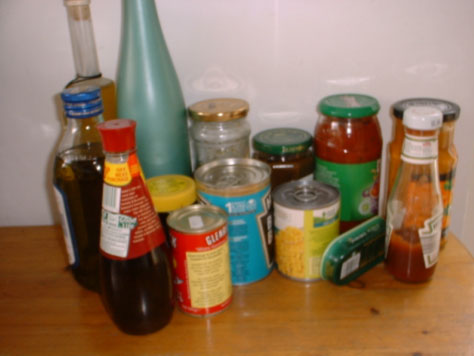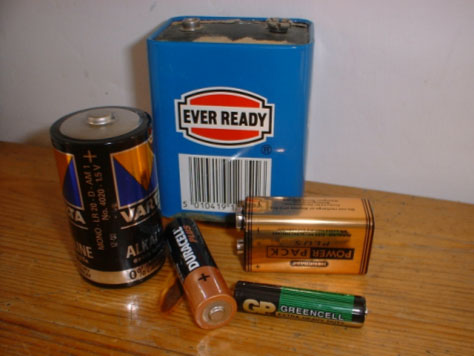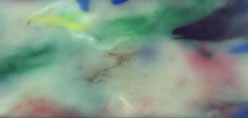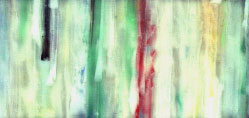| LOUGHBOROUGH UNIVERSITY
LU 1: RECYCLING: COLLECTING MORE OPEN-ENDED BRIEF - It has been recommended for many years that reducing, reusing and recycling provide many opportunities for environmental improvements in our own and other countries and in product manufacture. Design and make a product that uses at least one of those criteria. SPECIFIC BRIEF - New targets are soon to be introduced for the recycling and recovery of packaging waste. Although it is likely to be possible to meet the plastic recycling target for 2006 from industrial waste sources, more metal and glass is going to have to be extracted from the domestic waste stream. Design an appropriate separation and storage system for household use. Likely recycling targets for 2006:
• 2001 Comparing the second row with the first shows that
the recycling targets were met in 2001. The ‘recovery’ heading
includes other useful outputs from the waste stream (eg
energy from incineration). Currently it is thought that it is likely to be possible to meet the plastic recycling target for 2006 from industrial waste sources, but that more metal and glass is going to have to be extracted from the domestic waste stream. Further information concerning this design task can be found on the Centre for Alternative Technology website, (http://www.cat.org.uk) in the education section.
SUPPORT INFORMATION FOR TEACHERS The following photographs illustrate the design problem. They show the kind of products currently stored in glass and metal containers in UK households. Teachers wishing to extend the design tasks for a particular student might include the collection of batteries in the design brief. It is likely that the collection and recycling of waste batteries will be required soon in relation to the Waste Electrical and Electronic Equipment (WEEE) Directive. The WEEE Directive will come into force in the next year or so. They can be used as an introduction to the open-ended brief “Reduce, Reuse, Recycle”. or the specific recycling design context on ” Recycling: collecting more”
LU2: DESIGNERLY RECYCLING: HIGH ADDED VALUE Recycled polymer materials Recycled polymers can broadly match the technical properties of new polymers, but it is very difficult to remove colour pigments. Consequently, recycled polymers tend to be green, brown or black,, and these dark coloured pigments have been added to ‘mask’ the original pigments. An alternative strategy is to design the materials to be interesting mixed colours. This approach was developed by Jane Atfield at the Royal College of Arts in the early 1990s and such materials are now marketed by Smile Plastics Ltd. (http://www.smile-plastics.co.uk). Similar materials have been developed by Yemm&Hart in the US (http://yemmhart.com). Some examples of materials available from Smile Plastics are shown below. These materials are comparatively expensive to produce and are consequently likely to be more expensive than alternatives you might select.
Examples of materials available from Smile Plastics Ltd (Mansion House, Ford, Shrewsbury, SY5 9LZ. Tel: (01743) 850267. Fax: (01743) 851067. Some issues that the design must address
The following photographs illustrate the design problem. The first design is for an electric violin, but electric cellos and guitars have also been successfully designed and made. In this case, recycled high impact polystyrene (HIPS) was used. This can be adhesively bonded and finished with conventional spray paints. The design exploits the voids often found within recycled polymer sheets formed by thermoforming, which are acoustically advantageous. (Recycled polymers processed in other ways would not have such voids). The second design shows how the variegated nature of the recycled polymers can be exploited in a garden environment, where all the surrounding vegetation is also variegated. The recycled polymers look more natural than a single, new monocolour polymer! This design was made from recycled high density polyethylene (HDPE) Further designs can be seen on the Department of Design and Technology’s website. (http://www.lboro.ac.uk/departments/cd/) If A or AS students were exploring designs using recycled polymers, then they should be encouraged to develop their own ideas before looking at this site. They can be used as an introduction to the open-ended brief “Reduce, Reuse, Recycle”. or the specific recycling design context on ” Designerly recycling: high added value”
A love seat designed for gardens in 1999 by a Loughborough University student - James Duder
Reducing weight: cardboard structures A good example of the structural use of cardboard is the cardboard school in Suffolk, designed by the architect, Shigeru Ban. In considering the possibility of using cardboard as a material for your project you might like to investigate this project, and also some of the websites indicated in the table below.
Some of the design issues that the design must address • the way the weight of the body is supported by the chair
as a structure.would need to be understood. SUPPORT INFORMATION FOR TEACHERS The following photographs illustrate the design problem. They show typical flat-packed furniture and its associated packaging, often cardboard and a cardboard wine carrier. The use of significant quantities of materials and the associated weight is evident from the first photograph. The wine carrier indicates the kind of loads that cardboard can carry. “Is all that weight necessary?” is the starting point for students. In the 1930s R Buckminster Fuller - an early environmental campaigner - used the phrase “Doing more with less” to make the point, and this idea lies at the heart of this project. They can be used as an introduction to the open-ended brief “Reduce, Reuse, Recycle”. or the specific recycling design context on ” Reducing weight: cardboard structures”
The basic design of a CD case is the ‘jewel box’. This is made from polystyrene, which is transparent, but rather brittle, which is why the ‘button’ holding the CD often breaks. It also means that the design must be made up of a number of parts because integral hinges cannot be included in polystyrene injection mouldings. So why has it persisted? The transparency means that printed booklets and cardboard sleeves can be clearly read and the standardised design helps retailers at the point of sale and distributors. If CD cases were unique to a particular CD, they would be wasted if they didn’t sell. … and then there’s the shrink wrapping … and the cardboard sleeve Why are they there? All in all, it is a complex solution to the problem of delivering CDs to the customer. Designers have thought about this problem before and there are many different designs, but it has yet to be resolved.
• the design must be simple to manufacture SUPPORT INFORMATION FOR TEACHERS The following photographs illustrate the design problem. The first photograph shows a disassembled CD case and sleeve indicating the number of components, which have been used. Each component obviously implies a manufacturing and assembly operation. The CDs need to be sold and this imposes its own constrainrs - particularly relating to additional packaging and security. However, once sold the CDs often have a storage and ‘social display function’ to perform and sometimes users prefer to remove them from their boxes. The other photographs show CD racks and CD wallets to help students begin thinking about the whole problem. Any design solution must work for the manufacturer, distributor, retailer and customer if it is to be effective. They can be used as an introduction to the open-ended brief “Reduce, Reuse, Recycle”. or the specific recycling design context on ” Reducing parts: CD cases”
LU 5: REUSING PRODUCTS: SHOPPING BAGS Apart from unsightly litter, plastic bags are responsible for widespread environmental damage. They are difficult to recycle, do not degrade, can damage wildlife and can be washed up on remote islands. They must be one of humanity’s worst inventions! Products have been designed that allow used plastic shopping bags to be used as bin liners and as ‘stuffing’ for bean bags. It’s possible that a re-use strategy might be developed following this line of thinking. A key development in the plastics field is BioPlastic --the production of plastics from grown materials such as corn and potato starch, and perhaps these provide some possibilities. Further details of these products can be found at the following websites. http://www.nrf.org.uk However, biopolymers may not be the way forward. Before the introduction of throwaway plastic shopping bags, there were many durable designs. Perhaps, it is the convenience of just being able to drop into a shop without taking a bulky bag with you, which is the key factor? If so, there are new strong, foldaway materials available like those used for travelling towels. Perhaps shopping bags could be fitted into key rings or mobile phone cases or something most people carry. Or, perhaps there’s a better solution … something that could be kept in the boot of a car? Is this really such a hard problem to solve? Some issues that the design must address • the design must be acceptable to the majority of shoppers
so that it is an effective alternative to throwaway plastic bags The following photographs illustrate the design problem. It is important that the students think about the plastic shopping bag’s whole life cycle beyond the checkout so the photographs begin this process by showing them in a shopping trolley, in the boot of a car and having been brought into the house. And then there is the question of where to next? Any effective design replacement must cover the whole shopping scenario, and not just one aspect of it. They can be used as an introduction to the open-ended brief “Reduce, Reuse, Recycle” or the specific recycling design context on ” Reusing products: shopping bags”
LU 6: REUSING MATERIALS: AVOIDING LANDFILL Recycled polymer materials Plastics are extensively recycled in many countries, with 41%
of households An example is the millions of polypropylene sacks, which are discarded every year and currently landfilled. Such sacks are used to carry significant loads eg as the letters and parcels to be delivered by The Post Office and other companies, and for the delivery of building sand. When postal sacks are worn out they are discarded, and the bags used for sand deliveries are typically used only once. Because they are woven fibres, the materials are difficult to recycle, but they remain strong textile-like materials. Interesting examples of designs made from recycled materials can be found at http://www.designresource.org. These designs were entered by school, college, university and professional designers in the IDRA competitions, which have been run since 1995.
• the design should use the materials essentially in the
form in which they are found The following photographs illustrate the design problem. In 1997 Year 2 Loughborough design students were presented with a ‘small pile’ (approximately a ‘skip full’ of damaged postal sacks). This was a three week project in which they brainstormed ideas and designed and made prototypes. Two of their ideas are shown below and more can be seen on the Department of Design and Technology’s website. (http://www.lboro.ac.uk/departments/cd/) If A or AS students were looking at possible designs using polypropylene webbing, then they should be encouraged to develop their own ideas before looking at this site. They can be used as an introduction to the open-ended brief “Reduce, Reuse, Recycle”. or the specific recycling design context on ” Reusing materials: avoiding landfill”
|
||||||||||||||||||||||||||||||||||||||||||||||||||||||||||||||||||||||||||||
Design Contexts
|



